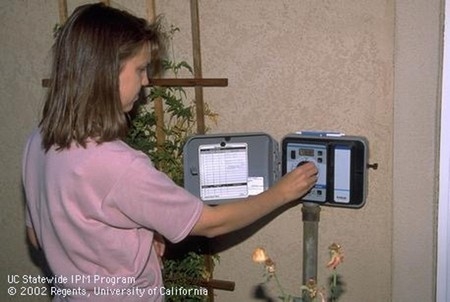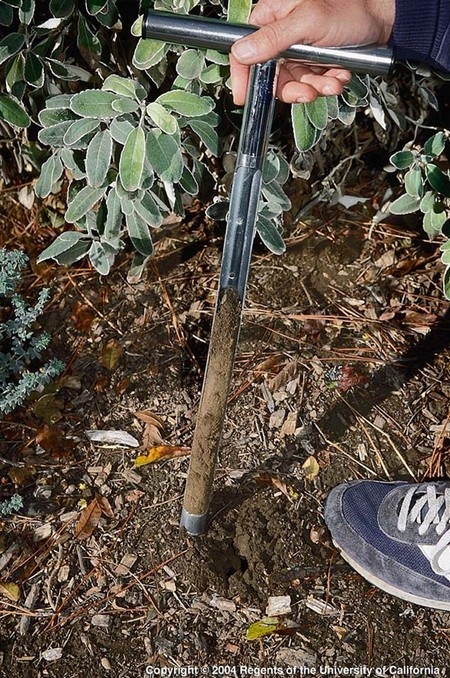Irrigation is not a ‘set and forget' thing. Your watering schedule should be adjusted each season (at least four times each year) as water needs in the landscape vary greatly from season to season. Seasonal adjustments allow us to adapt to changing weather conditions, plant growth patterns, and water availability. If your irrigation system isn't adjusted with the seasons, your plants can suffer from overwatering in the winter or underwatering in the summer.
As seasons change through the year, your plants' needs will change, too. For example, a 15-foot wide Chinese pistache tree (Pistacia chinensis) growing in Concord needs 52 gallons of water each week in July, 24 gallons per week in October, and only 8 gallons each week in January. Adjusting irrigation according to the season can decrease water use by half and your plants will be healthier.
You can calculate how much water your landscape should have for best growth. Look up the water needs of your plants in this database: https://ccuh.ucdavis.edu/wucols-db. Determine how much water is needed for each of your plants throughout the year here: https://puddle-stompers.com/waterwonk/how-much/index.php
Even knowing what your plants ‘should' need, it's best to test your soil occasionally to make sure the water you apply is getting to the right place. To test the depth of your watering, use a soil sampling tube or a small trowel to dig down 6–8 inches deep and observe the moisture level at the bottom of the hole. Get your hands dirty and learn what your soil feels like with varying moisture levels.
There can be substantial water waste when automatic watering systems are left to run on their own. Some systems come with a rain sensor function that will automatically turn off the system when it rains and others are smart controllers that adjust the schedule based on environmental factors. It might be time to upgrade your controller to take advantage of these benefits.
Some additional reminders for good irrigation practices:
Apply the right amount of water
Overwatering is more common than underwatering and can lead to more disease problems.
Water plants deeply and infrequently
The entire root zone should receive water, but let the soil dry partially in between to reduce the chance of root rot and other diseases.
Water early in the morning
Cooler temperatures and less wind will reduce evaporation, especially if using sprinklers or above-ground systems.
Avoid runoff
This happens often in clay soil and the water is simply wasted. Cycle the irrigation giving enough time for each cycle to be absorbed.
Regularly maintain your irrigation system
Check for leaks or damaged parts that could be wasting water and preventing water from getting to the right place.
Apply mulch
A 2- to 4-inch layer will reduce evaporation, minimize weed competition, and improve the soil.
See these links for more information on irrigation:
https://sonomamg.ucanr.edu/Drip_Irrigation/Drip_Irrigation_in_Different_Landscape_Situations/
https://sonomamg.ucanr.edu/Drip_Irrigation/
Help Desk of the UC Master Gardeners of Contra Costa County

